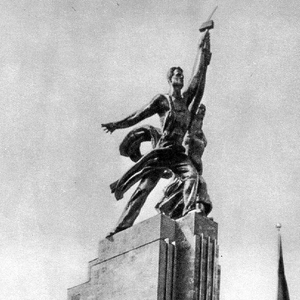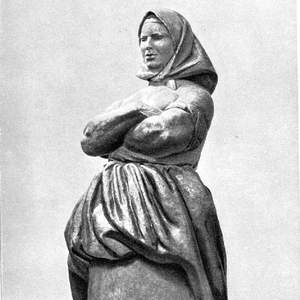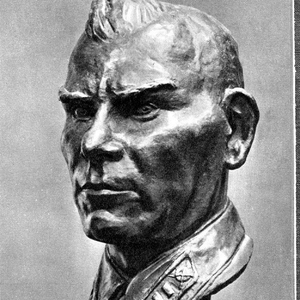“The Peasant Woman Leads the Dance: Some Ambiguities Presented by Vera Mukhina’s Sculpture,” Russian Art & Culture 1 , no. 1 (2012): 7-15. Winner of the First Prize in Russian Art & Culture Postgraduate Writing Competition 2012. View the full issue of the journal for free here on Issu.
Russian sculptor Vera Mukhina (1889-1953) is most widely known as the artist of the grandiose stainless-steel sculpture Worker and Collective Farm Woman (1937), which crowned the Soviet pavilion in the Paris International Exposition of 1937, strategically located opposite the German pavilion.
However, this sculpture does not exhaust Mukhina’s oeuvre. Another challenging topic for an art historian is her Peasant Woman (1927), recently discussed at length by Bettina Jungen (“Vera Mukhina: Art between Modernism and Socialist Realism,” Third Text 23, no. 1 (2009): 35-43).
In this article, I am addressing some of the issues raised by Jungen, especially the opposition between the formalistic and politicized readings of the Peasant Woman. In addition, this article views Mukhina’s sculpture in terms of gender and class notions of the ideological background from which it emerged. Finally, I also discuss the artist’s relationship with the official art establishment in these terms as well, considering Mukhina’s upbringing in a pre-Revolution bourgeois family and her career as one of few female artists in the theoretically emancipated but in reality largely patriarchal Soviet official art institutions. By identifying some ambiguities in the current criticism and interpretations of Soviet official art, I hope to propose some perspectives for further inquiry that would lead to a thorough understanding of the contradictory and multilayered history of the official art in the Soviet Union.





